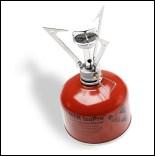|
Helpful Tips On Backpacking Stoves
Backpacking stoves are a very useful piece of equipment for any extended backpacking trip. While you do have the option to cook over an open fire, wood might be hard to find or unusable. Furthermore, there are some areas that restrict open fires. Having a stove that will light whenever and wherever you need it to can be very helpful. FuelWhen it comes to stoves, there are many options available. The main thing to consider is the type of fuel you want your stove to burn. Essentially, stoves come in two fuel options: liquid and canister. Both have their pros and cons. Liquid fuels come in several options: Alcohol, kerosene, unleaded gasoline and white gas. There are some liquid fuel backpacking stoves that are multi-fuel stoves. These are great when you’re traveling in various parts of the world and aren’t sure what type of fuel will be available. Liquid fuel is generally easier to find and less expensive. However liquid fuel stoves require pumping and priming in order to light. Liquid fuels generally burn hotter and require you to watch them when you’re trying to gently warm food. Liquid fuel stoves require more cleaning and maintenance, however the commonly used white gas is relatively clean. Canister fuel is either butane, propane or a mix of the two. Canister stove fuel can be difficult to find outside of the United States and Australia. Canister fuel is generally easier to set-up and light. Butane has difficulty lighting in temperatures below freezing, but adding propane or using propane on its own allows you to use a canister stove in temperatures as low as 0˚ F. Additional Tips
|





